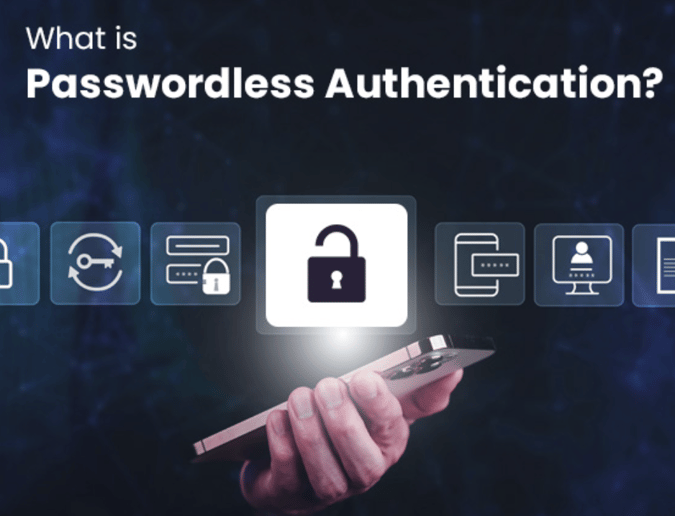In today's rapidly evolving digital landscape, ensuring the security of online accounts and the protection of sensitive data have become more critical than ever.
This holds particularly true for accounting and bookkeeping firms in the United States, entrusted with the responsibility of safeguarding confidential client information. While traditional password-based authentication methods have been widely utilized, they are increasingly susceptible to various security threats. In response to these challenges, the technology industry has been actively exploring alternatives that not only enhance security but also offer a more user-friendly and convenient approach – one such innovation gaining significant traction is known as "passwordless authentication."
The Problem with Passwords
Before we delve into passwordless authentication, let's understand the issues associated with traditional passwords. Passwords, despite their ubiquity, come with a host of challenges:
Weak Passwords: Users often choose simple and easily guessable passwords, putting their accounts at risk.
Password Reuse: Many people reuse passwords across multiple accounts, which means a breach of one account can compromise others.
Data Breaches: High-profile data breaches have exposed billions of usernames and passwords, leading to widespread identity theft.
User Friction: Passwords can be a source of frustration for users who must remember and manage multiple complex passwords.
What Is Passwordless Authentication?
Passwordless authentication, as the name suggests, eliminates the need for traditional passwords. Instead, it relies on alternative methods to verify a user's identity. These methods can include biometrics (e.g., fingerprint or facial recognition), security keys, or one-time passcodes sent via email or SMS.
How Passwordless Authentication Works
Biometrics: Biometric authentication uses unique physical or behavioral traits, such as fingerprints or facial features, to confirm a user's identity. Biometric data is securely stored and compared during login.
Security Keys: Security keys are physical devices that users plug into their computers or mobile devices. These keys generate one-time codes, ensuring secure access.
One-Time Passcodes: Users receive one-time passcodes on their registered email or phone number. These codes must be entered during login and expire after use.
QR codes: Users can log in to an application or website by scanning a QR code displayed on the login page with their mobile device. This can replace the need to manually enter a username and password.
Advantages of Passwordless Authentication
Passwordless authentication offers several advantages:
Enhanced Security: Biometrics and security keys provide a higher level of security than traditional passwords. It's challenging for attackers to replicate these unique identifiers.
User Convenience: Passwordless methods reduce friction in the login process, making it more user-friendly.
Reduced Reliance on Passwords: With passwordless authentication, users can forget about remembering complex passwords.
Enhanced User Experience: Passwordless authentication simplifies the login process, resulting in a smoother and more enjoyable user experience. Users appreciate the convenience of quick and secure access.
Reduced Support Costs: With fewer password-related issues, such as forgotten passwords or account lockouts, support costs decrease. Passwordless authentication can lead to substantial savings for organizations.
Multi-Platform Accessibility: Passwordless methods are versatile and can often be employed across various platforms and devices, allowing users to access their accounts seamlessly from different environments.
Implementation and Adoption
Implementing passwordless authentication may vary depending on the platform or service. Many popular online services and organizations are already offering passwordless options, allowing users to choose the method that suits them best.
However, transitioning to passwordless security isn't without its challenges. It requires support from both service providers and users. As more organizations embrace these methods, adoption rates are expected to rise.
Why is Passwordless important for Accounting and Bookkeeping firms?
In the past, accountants relied on a single identity for desktop access to manage all their desktop based applications, simplifying the authentication process. However, the landscape has dramatically evolved, characterized by the proliferation of cloud-based applications. Today, accountants find themselves managing an intricate web of multiple unique identities, each associated with various cloud applications essential for their workflow.
This complexity not only adds layers of difficulty but also amplifies the security concerns. With the growing number of identities to manage, the risk of password-related vulnerabilities and breaches increases significantly. Accountants are tasked with safeguarding a treasure trove of sensitive financial data, which necessitates robust security measures.
To meet these evolving challenges, cybersecurity solutions have adapted swiftly, shifting their focus from merely securing data storage to the comprehensive protection of access points to cloud applications. Passwordless authentication emerges as a powerful solution, addressing both the security needs and the practical challenges accountants encounter in their daily operations. It streamlines access, enhances security, and simplifies the management of multiple identities, aligning perfectly with the unique demands of accounting and bookkeeping firms in the modern digital age.
Passwordless with Practice Protect
Practice Protect, the largest access management platform for the accounting industry, offers a variety of passwordless options. All of our clients have been using the one time passcode option, however, we recently launched the QR code option which is gaining lot of traction among the accountants.
Experience enhanced security and convenience with our QR code login feature, simplifying access to the portal from your mobile device. Here is a tutorial about this feature.
Gif: https://practiceprotect.com/wp-content/uploads/2023/09/RPReplay_Final1690229382.gif
Learn more about secure access management and passwordless authentication by speaking to a security consultant at Practice Protect.
Security and Concerns
While passwordless authentication offers improved security, there are concerns to address. Users may worry about the safety of their biometric data, and organizations must implement robust security measures to protect against potential risks.
Future Trends
The adoption of passwordless authentication is likely to increase in the coming years. As technology advances, we can expect more innovative methods and greater integration of these secure authentication techniques into various applications and services.
Conclusion
Passwordless authentication represents a significant step forward in the realm of cybersecurity. It addresses the limitations of traditional passwords and offers enhanced security and user convenience. As the digital landscape evolves, embracing passwordless methods may become the new standard for secure access. It's a step toward a future where we can enjoy a more secure and hassle-free online experience.




